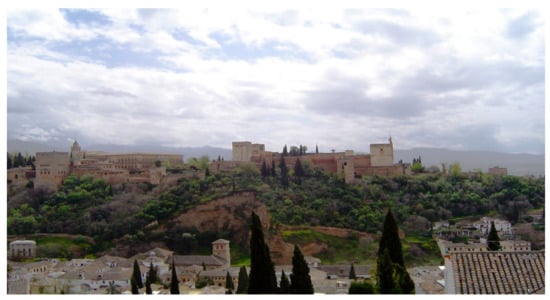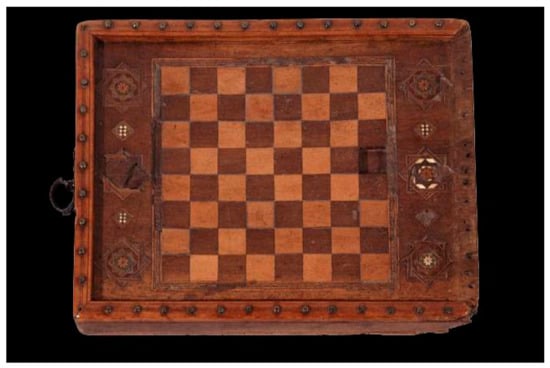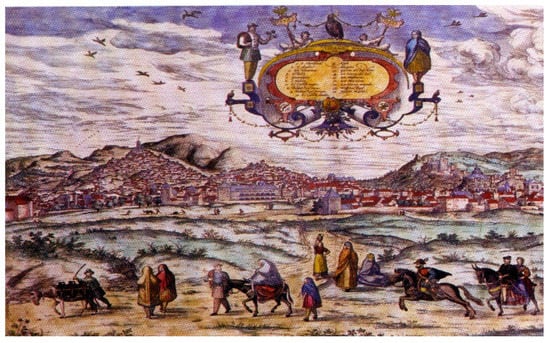Abstract
For 2000 years, the history of Granada has been the story of its peoples—native Iberian, Roman, Jewish, Muslim, Christian and gypsy—who bequeathed a multi-cultural heritage to the city, forged by momentous racial, religious and political conflicts. That heritage is central to Spain’s vexed quest for its own identity, and pre-eminent in that quest is the encounter between Islam and Christianity that took place there. Based on historical sources including oral and written testimonies, early historiography and contemporary historical views, this article considers the answers to two key questions, with specific reference to the Nasrid dynasty of Granada: (i) how did the Nasrids contribute to the culture of Andalusia and the late medieval Mediterranean, and (ii) was religious difference an obstacle to cultural dialogue in Granada in the late Middle Ages? The contention is that Granada’s importance as a meeting place between Islam and Christianity hinges on its apparent transition from Muslim state to Christian enclave, an event crucial to our understanding of the history of the Iberian Peninsula, and also of Europe.
The city of Granada has profound importance as a meeting place of civilizations. For 2000 years, its diverse peoples—native Iberian, Roman, Jewish, Muslim, Christian and gypsy—have left an indelible imprint on the city and province. That unique heritage was forged by momentous racial, religious and political conflicts, and it is a legacy crucial to Spain’s contentious quest for its own identity. Pre-eminent in that quest is the encounter between Islam and Christianity that took place there. This article considers the answers to two key questions, with specific reference to the Nasrid dynasty of Muslim rulers of Granada: first, how did the Nasrids contribute to the medieval culture of Andalusia in their creation of an Arabic-speaking Islamic state in a distant outpost of western Europe? Secondly, how did the historical events of late 15th century Granada demonstrate that religious difference was not merely an obstacle to cultural dialogue between East and West during the late Middle Ages, but actually culminated in the fall of the Islamic state of Granada in 1492, and its recreation as a Christian kingdom? My contention is that Granada’s importance as a meeting place between Islam and Christianity hinges on its apparent transition from Muslim state to Christian enclave, a significant yet enigmatic event essential to an understanding of the history of the Iberian Peninsula, and also of Europe (Figure 1).

Figure 1.
The Alhambra, Granada, viewed from the Sacromonte.
The Museum of the Alhambra has a Nasrid chessboard on display (Figure 2) dating from the 15th century, which constitutes a tangible embodiment of both the cultural legacy and the cultural conflict of the Nasrid dynasty of Muslim rulers. It was made using a marquetry technique that evolved in Granada known as taracea, in this case consisting of inlaid squares of beech and walnut wood and bone, and its well-worn surface is a visible testimony to its everyday use in the domestic life of the Nasrid court. Chess is one of the oldest war games, introduced to Europe through Muslim Spain, and by the time the Nasrids were playing it in the late 1400s, the chess queen was no longer a weaker counterpart of the chess king, but the most powerful piece on the board. The only way to win was to corner and capture the enemy king, a crucial move played out on the real-life frontier in the clash between Muslim Granada and Christian Castile, when the armies of Queen Isabella I defeated Mohammed XI, Boabdil, last Nasrid sultan of Granada, thereby ending 800 years of Muslim rule in Spain. The Nasrids had established Granada as their capital city in 1237, where they created an exclusively Arabic-speaking, Islamic state at the farthest outpost of western Europe which lasted for over 250 years until 2 January 1492, when it became part of the Christian kingdoms of Spain. The city marked the confluence of two civilizations, but in a context of maximum discord between them, hence my contention that Granada is a site of unique historical importance in the debate surrounding Spain’s cross-cultural identity.

Figure 2.
Nasrid chessboard, Museum of the Alhambra.
The question of Nasrid Granada’s contribution to the culture of Andalusia and the late medieval Mediterranean can be answered in part by a snapshot of just three of the many aspects of Nasrid cultural innovation that benefited the Mediterranean area, namely trade, civil engineering and architecture. The technique of taracea used in the Alhambra chessboard is a clear example of the long cultural reach of Nasrid artisan crafts, as their ancient marquetry skills are still used today in two cities, Granada and Damascus. Luxury items made using marquetry were part of a broader range of crafts, such as leatherwork, exquisite metalwork in gold and silver, and a renowned silk industry, which brought wealth through trade inside Andalusia but also created a cultural and commercial encounter with southern Italy and north Africa through sea-ports like Almería and Málaga, where Genoese and Moroccan merchants vied to buy local goods, woven silk in particular. At the same time, Nasrid Granada was a place of rich artistic and scientific culture, a hub of poetry and learning in the 14th and 15th centuries, but its most immediately striking cultural bequest was an architecture and urban design which has defined its cityscape past and present.
In 1238, the first Nasrid sultan, Muhammed I, embarked on building the new fortress of his city, the Alhambra, which became the symbolic and representative hallmark of the Nasrid era, and an iconic feature in the history of Granada. In less than a year, tall defensive structures had been raised, supplied with water from the river Darro carried there by specially created irrigation channels, using a hydraulic system originally operated by the Romans and the Visigoths, but perfected by the Nasrids, whose norias or waterwheels harnessed the river waters to power the grain mills and irrigate the land. The walled citadel of the Alhambra came into being, and Granada evolved into a living, breathing model of an Islamic city with a unique cityscape marked by the minarets of multiple mosques and narrow, labyrinthine streets which configured it according to the north African model, set against the fertile plain beneath and watered by an irrigation system still in use today.
This short sketch of key elements of the cultural contribution of the Nasrids to Andalusia and the Mediterranean, past and present, in this case commerce, civil engineering and architecture, reveals a dynamic and influential engagement with contemporary European and north African trade, as well as scientific encounters with the Visigothic and Roman past, and an architectural interchange with ancient and medieval north Africa, whose expression molded the image of Granada for future generations.
Yet the Nasrid chessboard and its warring pieces also represents the conflict between Islam and Catholicism which had a significant yet equivocal impact on cultural dialogue and set Granada apart from other regions of Spain. Although there were many periods of peaceful coexistence and truce between the Muslims and Christians of medieval Spain, the Christian conquest arose precisely from the religious divide, and its aftermath appeared to separate Islamic and Christian culture even further. As Muhammad XI, known as Boabdil, last sultan of Granada, departed in desolation from his native city in 1492, much of Europe joined the Catholic Kings Ferdinand and Isabella in celebrating what they saw as a great victory, an act of revenge against Islam for the fall of Constantinople 40 years before. Te Deums were chanted in Saint Paul’s cathedral in London, the Pope held a special High Mass in Rome, and Venice and Naples joined the festivities. In stark contrast, the Egyptian historian Ibn Iyas (1448–c.1524), last Oriental witness of the death throes of the Nasrid kingdom, recorded in his diary of 1492 that the fall of Granada was one of the most terrible catastrophes to befall Islam [1] (p. 273).
Granada became a place of trauma instead of reconciliation for its Muslim inhabitants after 1492. Some years later, a crypto-Muslim scholar known as the mancebo or young man from Arévalo visited the city, where he interviewed prestigious figures of the Islamic community. He recorded his encounter with a 93-year-old Muslim woman, the Mora de Úbeda, who witnessed the terrible destruction of Arabic books ordered by Cardinal Cisneros in the Plaza Bib-Rambla. She told him: ‘I saw the Holy Book in the hands of a merchant who was tearing it up to use as paper for children, and I gathered up all the pieces, which broke my heart [2] (p. 54). A local Islamic teacher, Yuse Banegas, lamented that ‘nobody ever wept over such a misfortune as that of the sons of Granada’, and recalled how the sale at public auction of over 300 young Muslim women was more than he could bear to watch [3] (p. 338).
This Christian persecution and suppression of Granadan Muslims was accompanied by dramatic changes in the urban configuration itself. By the early 1500s, the cityscape had begun to undergo a transformation that aimed to obliterate all traces of Islam and remake Granada as a Christian city (Figure 3). Many streets were widened and straightened, churches and convents dominated the urban landscape as minarets were converted to bell towers, and a new cathedral was erected on the very site of the main mosque, while the construction of the Renaissance palace of King Charles V in the grounds of the Alhambra began in 1526. The material reconfiguration of Granada as a Catholic city was an act of large-scale cultural borrowing with a religious and political agenda that paved the way for the creation of a brand-new Christian history that aligned Granada with Rome and Jerusalem.

Figure 3.
Mid-sixteenth century map of Granada by Flemish artist Joris Hoefnagel, from his work Civitates orbis terrarum.
In the space of the hundred years up to the Morisco expulsion in 1614 Granada had been transformed from an Arabic-speaking Islamic state with no native Christians into a Spanish-speaking Castilian kingdom with almost no native Muslims. What of course could never be erased was the fundamental Islamic nature of Granada that inhered in the very design of the city. The Albaicín district with its maze of winding alleys and the great Islamic monument of the Alhambra on the hill opposite continued to define the essence of the place. Both are now World Heritage sites and constitute Granada’s main tourist attractions.
Unlike some of Spain’s cities, Granada was never a place of convivencia or coexistence in its familiar sense of the living side by side of Christians, Jews and Muslims in the Middle Ages [4]. As an Islamic state, no native Christians lived there for 250 years, and trade and cultural exchange between Muslim Granada and Christian Castile were limited to the frontier lands between the kingdoms. The Nasrid chessboard serves as an emblem of the uneasy, ambivalent cultural interchange scarred by sectarian conflict that forms part of Granada’s history as a meeting place of races and religions. The pioneering Nasrid dynasty bequeathed an important medieval cultural legacy to Europe and north Africa that lives on in the present and looks to the future. At the same time, religious confrontation in Granada did not just prove an obstacle to East–West cultural dialogue, but eventually culminated in a major regime change which ended many centuries of Islamic rule in the peninsula. Even so, the splendid Renaissance Christian city that emerged after 1492 could not eradicate the ever-present Islamic heritage with which it was inescapably fused. Its multicultural history derives, not from convivencia, but from its succession of diverse peoples and cultures, of which the most enduring was Islamic. As such the city and province of Granada are unique sites of cross-cultural meaning, crucial to today’s vexed debates over the true nature of Spain’s identity.
Funding
This research received no external funding.
Conflicts of Interest
The author declares no conflict of interest.
References
- Histoire des Mamlouks Circassiens, Tome II 872–906. p. 169, Note 5. Available online: https://gallica.bnf.fr/ark:/12148/bpt6k9109269j (accessed on 15 November 2021).
- Tratado [Tafsira] del Mancebo de Arévalo (Al-Andalus. Textos y Estudios); Spanish and Creole Edition; Narváez Córdova, M.T. (Ed.) Editorial Trotta: Madrid, Spain, 2003; p. 54. Available online: https://www.amazon.com/Tratado-Treatise-Spanish-Mancebo-Arevalo/dp/8481646091 (accessed on 15 November 2021).
- Harvey, L.P. Islamic Spain, 1250–1500; University of Chicago Press: Chicago, IL, USA, 1990; p. 338. [Google Scholar]
- Wolf, K.B. Convivencia in Medieval Spain: A Brief History of an Idea’. Available online: https://compass.onlinelibrary.wiley.com/doi/abs/10.1111/j.1749-8171.2008.00119.x (accessed on 21 January 2009).
Publisher’s Note: MDPI stays neutral with regard to jurisdictional claims in published maps and institutional affiliations. |
© 2022 by the author. Licensee MDPI, Basel, Switzerland. This article is an open access article distributed under the terms and conditions of the Creative Commons Attribution (CC BY) license (https://creativecommons.org/licenses/by/4.0/).